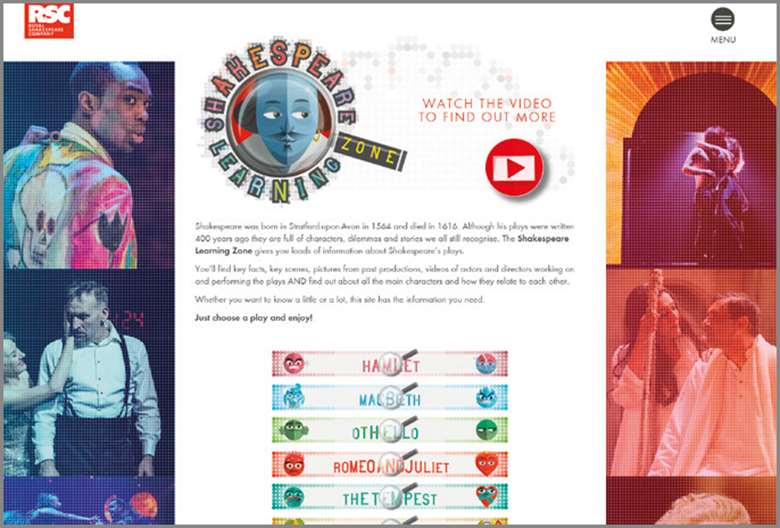Shakespeare Learning Zone
Sarah Lambie
Saturday, December 1, 2018
An enormously thorough resource.

The Royal Shakespeare Company's new Shakespeare Learning Zone was launched on 3 September and is an extraordinarily thorough and detailed resource covering seven of the Bard's plays so far, with a further two to be added each academic term. The site is the result of extensive consultation with students and teachers about their needs in studying Shakespeare's work, and the result is written for use by 11- to 18 year-olds, with teacher notes, linked to resources, interspersed throughout.
At the moment, the seven available plays are Hamlet, Macbeth, Othello, Romeo and Juliet, The Tempest, Julius Caesar and Twelfth Night. I decided to look at Romeo and Juliet in detail.
On reaching a play's home-page, students are invited to explore the play in three degrees of depth, with all information categorised under the headings Story, Characters, Language, and Performance. The site is incredibly easy to navigate, with the three levels of depth colour-coded, and drop-down menus at the top allowing you to switch between the four topics.
I was interested to see whether the site was geared more strongly to English or Drama. The answer, as one might expect, is both. The RSC's Education Department has always been a strong advocate of the on-the-feet, rehearsal-room approach to understanding Shakespeare, and teacher notes propose practical activities of huge value to drama specifications, such as designing settings, or devising a performance of the Prologue. Meanwhile there are PEE grids to aid students in planning and writing essays for English.
The information offered to students is packed full of thinking questions so that they aren't simply trying to digest a barrage of facts about the play; while different types of media keep the learning style varied: there are videos both of rehearsal room discussion on such points as ‘prose and verse’ and ‘antithesis’, and full scenes from RSC productions to watch after studying the annotated text. Only the movable ‘character maps’ seem odd – allowing students to drag character heads around a page. Fun, and appealing to graphically-minded students, but a pointless use of interactivity.
This is an excellent resource that will grow termly. Well worth directing your students to, and a great shortcut to teacher resource packs from a number of RSC productions of each play, all together in one handy place.

